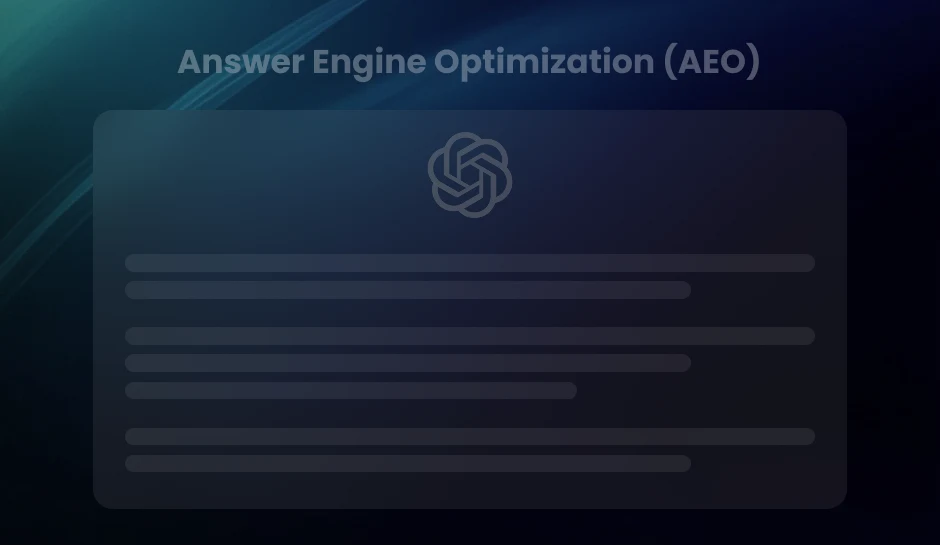
Data Enrichment Tools: Enhancing Business Intelligence with Accurate Insights
Raw data lacks context—data enrichment tools fill the gaps by adding firmographics, demographics, and behavioral insights. Enriched data enhances CRM accuracy, optimizes sales outreach, and powers predictive analytics. Discover how businesses gain a competitive edge with better data-driven decisions.
Raw data lacks context, limiting its usefulness. Businesses rely on data enrichment to fill in the gaps, adding details such as demographics, behavioral insights, and firmographic attributes. This process refines datasets, allowing for deeper analysis, more personalized marketing, and improved decision-making.
Data enrichment tools automate this enhancement by integrating external sources with existing data. These tools validate, standardize, and supplement information, ensuring accuracy and completeness. They connect with APIs, third-party datasets, and machine learning models to enrich profiles, correct inconsistencies, and provide actionable intelligence. Companies leveraging these tools gain a competitive edge by making informed strategic moves based on high-quality data.
The Role of Data Enrichment in B2B Strategies
Refining B2B Marketing with Enriched Data
Business-to-business marketing thrives on precision. Enriched data sharpens targeting, helping marketers reach ideal prospects with messaging that resonates. By integrating firmographic, technographic, and intent data, companies refine segmentation, optimize outreach, and increase engagement.
For example, predictive analytics powered by enriched data increases lead qualification accuracy. A report by Forrester highlights that B2B brands using advanced data-driven strategies improve conversion rates by up to 30%. Enrichment transforms raw contact lists into dynamic databases filled with insights on job titles, company revenue, industry trends, and digital behaviors.
Enhancing Customer Profiles for B2B Sales Success
Detailed customer profiles drive effective B2B sales conversations. Incomplete or outdated records lead to inefficiencies, while enriched data ensures sales teams operate with current and relevant information.
- Firmographic Enhancements: Knowing company size, annual revenue, and market position informs tailored value propositions.
- Behavioral Insights: Tracking interactions across digital touchpoints provides data on buying intent.
- Technographic Data: Understanding a prospect’s tech stack helps align messaging with their existing infrastructure.
McKinsey research shows that B2B sales teams leveraging enriched data experience a 40% increase in customer acquisition efficiency. Sales cycles shorten when reps contact leads armed with relevant, contextual insights rather than generic pitches.
Personalization at Scale: The Competitive Advantage
In B2B markets, personalization influences decision-making. Generic outreach gets ignored, while tailored messaging builds trust. Enriched data facilitates scalable personalization by fueling account-based marketing (ABM) campaigns with deep customer intelligence.
Companies deploying data-driven ABM strategies see a 171% increase in average annual contract value, according to a study by the ABM Leadership Alliance. Data enrichment enables such strategies by categorizing prospects based on firmographic, intent, and engagement attributes.
With enriched databases, marketing automation tools deliver hyper-personalized content to prospects showing high engagement. Sales teams prioritize outreach based on real-time signals, ensuring efforts focus on prospects most likely to convert.
Pro Tip- Leverage real-time data enrichment to dynamically update customer profiles, ensuring your B2B marketing and sales efforts are always based on the latest firmographic, behavioral, and technographic insights. This keeps outreach relevant, boosts engagement, and shortens sales cycles.
Data Enrichment Tools: Enhancing CRM Platforms
How Enrichment Tools Integrate with CRM Systems for More Complete Customer Views
CRM systems store vast amounts of customer data, but without enrichment, much of that data remains incomplete or outdated. Data enrichment tools bridge this gap by integrating directly with CRM platforms and supplementing existing records with external data sources. These tools pull in firmographic details, social media activity, real-time intent signals, and other relevant information, creating a more comprehensive customer profile.
Most enrichment tools connect to CRMs via APIs, enabling seamless data synchronization. As a new lead enters the system or an existing record gets updated, the enrichment tool retrieves and appends supplementary data in real-time. This process ensures that sales and marketing teams always have access to the latest and most relevant details before engaging with prospects.
CRM platforms like Salesforce, HubSpot, and Zoho support native integrations with leading data enrichment providers. These integrations eliminate the need for manual data entry, reducing errors and ensuring consistency across teams. Automated enrichment processes also enhance segmentation capabilities, allowing businesses to create highly targeted campaigns based on accurate, up-to-date insights.
The Benefits of an Automated, Enriched CRM for Customer Engagement and Retention
- Improve Lead Scoring Accuracy: Enriched data reveals deeper insights into a prospect’s company size, industry, job title, and purchase intent, allowing sales teams to prioritize high-value leads.
- Enhance Personalization: More detailed customer profiles enable tailored messaging across email, chat, and sales outreach, leading to higher engagement rates.
- Increase Retention: Updated firmographic data and behavioral insights help customer success teams anticipate churn risks and proactively address customer needs.
- Streamline Sales Outreach: Automated enrichment eliminates the time sales reps spend researching prospects, allowing for more focus on relationship-building and conversions.
- Optimize Marketing Campaigns: Marketers can segment audiences with precision, ensuring that each campaign targets the right personas with relevant messaging.
Why Companies Need Data Enrichment
Enhancing Data Quality and Decision-Making
Raw data often contains inconsistencies, missing values, and outdated records. Data enrichment resolves these issues by appending external information, validating existing entries, and standardizing formats. Companies that integrate enrichment processes into their workflows gain access to complete, accurate, and up-to-date datasets.
Decision-making improves significantly when enriched data replaces incomplete records. Marketing teams can refine segmentation strategies based on behavioral insights, while sales teams rely on enriched CRM entries for more precise prospect targeting. Operational efficiency also increases, as departments eliminate redundant efforts caused by duplicate or erroneous data.
Impact Across Different Departments
- Sales: Enriched data provides sales teams with verified contact information, job titles, and company details, allowing for more precise prospecting and personalized outreach. Reps engage leads with relevant insights, increasing conversion rates.
- Marketing: Campaigns become more effective when based on enriched data. Marketers access demographic, firmographic, and behavioral insights that refine audience targeting, resulting in higher engagement and lead generation.
- Customer Support: Accurate customer data ensures seamless interactions. Support teams quickly access relevant customer histories, reducing resolution times and improving satisfaction.
- Finance: Enriched financial records support more accurate invoicing, credit assessments, and fraud detection. Companies mitigate financial risks by verifying customer and vendor data before transactions occur.
- Operations: Supply chain and logistics teams rely on data enrichment for real-time tracking, accurate inventory management, and demand forecasting. Cleaner datasets reduce inefficiencies and operational costs.
Maintaining enriched records strengthens internal collaboration, aligns cross-departmental strategies, and reduces discrepancies across business processes. Organizations that invest in data enrichment gain a competitive edge, improving revenue and customer retention through data-driven decisions.
Pro Tip- Regularly audit and update enriched data to maintain accuracy and relevance across departments. Automated enrichment workflows help eliminate inconsistencies, ensuring seamless decision-making and maximizing business impact.
Data Enrichment and the Sales Funnel
Using Enriched Data to Guide Potential Customers
Data enrichment refines raw information, transforming basic contact details into a comprehensive customer profile. Enhanced data allows sales teams to track customer behavior, assess intent, and deliver targeted messaging at each stage of the sales funnel. Without enriched data, companies rely on incomplete insights, leading to generic outreach and lower conversion rates.
A prospect entering the funnel with just a name and email address provides limited opportunities for engagement. By appending firmographic, technographic, and behavioral data, sales reps gain a clearer picture: of the industry, company size, technology stack, and past interactions. This added context helps tailor outreach and content strategies, aligning them to the prospect’s specific needs.
- Top of the Funnel (Awareness): Enriched data segments audiences based on demographics and behavior, ensuring ads and content reach relevant prospects.
- Middle of the Funnel (Consideration): With data-driven insights, companies provide contextual product recommendations and targeted follow-ups, increasing engagement.
- Bottom of the Funnel (Decision): Sales teams use enriched firmographic data to craft personalized pitches, addressing pain points with precision.
The Role of Detailed Data in Qualifying Leads and Closing Sales
Lead qualification relies on accurate and comprehensive data. Scoring systems use firmographic and behavioral enrichment to rank leads, helping prioritize high-value prospects. A lead with steady website engagement, specific job titles, and decision-making authority moves up the priority list, reducing time wasted on unqualified contacts.
Predictive analytics fueled by enriched data refine forecasting models. Historical patterns combined with real-time interactions reveal which leads are most likely to convert. Armed with this knowledge, sales teams allocate resources efficiently, closing deals faster.
Enrichment also enhances customer interactions. Personalized communication increases response rates, making outreach efforts more effective. A well-timed call referencing recent company news or industry trends demonstrates credibility and relevance, pushing prospects toward a buying decision.
Companies leveraging enriched data streamline their sales efforts, shorten conversion cycles, and boost win rates. The deeper the insights, the stronger the engagement-resulting in more closed deals and higher revenue.
Pro Tip- Leverage AI-powered data enrichment tools to automatically score and prioritize leads based on real-time intent signals. This ensures sales teams focus on high-value prospects, improving conversion rates and shortening sales cycles.
Types of Data Enrichment Tools
Data enrichment tools fall into several categories, each designed to enhance datasets in specific ways. Some focus on business intelligence, while others specialize in consumer insights or firmographic data. These tools integrate with existing CRM systems, marketing platforms, and analytics solutions to refine raw data into actionable intelligence.
Firmographic Data Enrichment Tools
These tools add company-specific attributes to datasets, improving lead scoring and segmentation. They provide data points such as company size, revenue, industry classification, and geographical presence.
- Clearbit – Offers firmographic data enrichment for CRM platforms.
- Dun & Bradstreet – Provides extensive business insights and market intelligence.
- ZoomInfo – Delivers B2B contact and company intelligence to sales and marketing teams.
Demographic Data Enrichment Tools
These tools append demographic attributes to contact records, aiding in personalization and audience segmentation. They enhance user profiles with age, gender, income level, education, and household composition.
- Experian – Supplies detailed consumer demographic data for targeted marketing.
- Melissa – Verifies and enriches demographic details for improved customer outreach.
- FullContact – Matches contact records with extensive consumer insights.
Behavioral Data Enrichment Tools
Tracking and analyzing online behavior forms the foundation of these tools. They provide insights into customer interactions, website visits, purchase history, and content engagement.
- Bombora – Specializes in intent-data enrichment for B2B marketing.
- Leadfeeder – Identifies companies visiting a website and analyzes their activity.
- 6sense – Uses AI-driven predictive analytics to map customer buying intent.
Geographic Data Enrichment Tools
Location-based data enrichment tools supplement records with precise geographic details, facilitating localized marketing and regional analysis.
- Google Places API – Provides accurate location data and business insights.
- HERE Location Services – Delivers geospatial data for strategic planning.
- Foursquare – Enhances datasets with POI data and customer movement insights.
Technographic Data Enrichment Tools
These tools enrich records with information about the technologies and software used by businesses, aiding competitive analysis and targeted prospecting.
- HG Insights – Tracks software adoption and technology stack details.
- BuiltWith – Identifies web technologies and online platform usage.
- Datanyze – Provides technographic insights for sales teams.
Features to Look for in an Ideal Data Enrichment Platform
- Accuracy and Freshness – Reliable sources and real-time updates reduce stale data.
- Integration Options – Seamless connectivity with CRMs, marketing tools, and analytics platforms ensures smooth data flow.
- Customization – Configurable enrichment rules allow businesses to tailor datasets to specific needs.
- Compliance and Security – Adherence to GDPR, CCPA, and other regulatory frameworks ensures data governance.
- Scalability – The ability to handle large volumes of data without performance degradation supports business growth.
Using Data Enrichment Tools for Better Data Analytics
Big Data Analytics: How Enriched Data Feeds Into Deeper Insights
Raw data often contains gaps, inconsistencies, and outdated information. Data enrichment tools resolve these issues by adding relevant external and internal data points. This process enhances big data analytics by increasing data accuracy, completeness, and relevance.
Organizations using enriched data in their big data pipelines achieve more precise customer segmentation, improved market analysis, and stronger business intelligence. Enriched datasets allow for the detection of hidden patterns and correlations that remain unnoticed in raw datasets. Financial institutions, e-commerce companies, and healthcare providers leverage these insights to optimize operations and make data-driven decisions with a higher degree of confidence.
For example, enriched datasets help sentiment analysis models more accurately gauge public perception of brands. Retailers using demographic, behavioral, and transaction-enriched data refine their pricing strategies based on localized purchasing behaviors. The result is more comprehensive and actionable insights that drive competitive advantage.
Advanced and Predictive Analytics: Forecasting Future Trends With Enriched Data
Predictive analytics relies on historical data and patterns to project future trends. Without enrichment, these predictions suffer from inaccuracies due to incomplete or outdated information. Data enrichment tools enhance predictive models by incorporating real-time data, third-party datasets, and contextual insights.
In financial services, predictive models enriched with macroeconomic indicators, social sentiment, and customer transaction histories yield stronger risk assessment models. Marketers use enriched behavioral data to forecast customer churn and adjust retention strategies accordingly. In logistics, companies integrate real-time traffic, weather patterns, and historical delivery data to optimize route planning and reduce delays.
Enriched predictive models also improve demand forecasting. Retailers use historical and real-time consumer behavior data to anticipate product demand, reducing stockouts and excess inventory. This leads to cost savings and better supply chain efficiency.
Machine Learning Algorithms: Automated and Enhanced Learning From Enriched Datasets
Machine learning algorithms perform better when trained on richer, more diverse datasets. Data enrichment tools provide these algorithms with additional structured and unstructured data, leading to improved model accuracy and generalization.
Fraud detection systems, for example, use enriched transaction histories combined with behavioral analytics to identify anomalies more effectively. Recommendation engines in e-commerce integrate enriched user profiles, browsing history, and external demographic data to generate highly personalized product recommendations.
- Natural language processing (NLP) models achieve higher accuracy when trained on enriched text data sources, including industry-specific terminology, sentiment indicators, and contextual metadata.
- Computer vision models benefit from enriched datasets containing labeled images from multiple sources, improving object recognition and classification accuracy.
- Chatbots and virtual assistants use enriched customer interaction data to enhance response accuracy and user experience.
Enriched datasets accelerate model training and reduce bias by incorporating diverse data points. As a result, organizations deploying machine learning solutions see better automation outcomes, improved personalization, and stronger AI-driven decision-making.
Pro Tip- Combine real-time data enrichment with AI-driven analytics to enhance predictive accuracy, reduce biases in machine learning models, and unlock deeper business insights for smarter decision-making.
Best Practices in Choosing Data Enrichment Tools
Considering Data Governance and Compliance
Regulatory frameworks like GDPR, CCPA, and HIPAA impose strict requirements on data handling. A compliant data enrichment tool must support data residency constraints, audit logs, and consent management. Vendors offering certifications such as ISO 27001 or SOC 2 demonstrate adherence to security and privacy best practices.
Assessing a tool’s ability to handle data minimization and retention policies avoids redundant storage of enriched records. Automated compliance monitoring features help track policy adherence in real-time, ensuring regulatory alignment without manual intervention.
Ensuring Seamless API and CRM Integration
A data enrichment tool must support RESTful or GraphQL APIs with well-documented endpoints to facilitate smooth integration. Look for pre-built connectors for major CRM platforms such as Salesforce, HubSpot, and Microsoft Dynamics to reduce development overhead.
- Batch processing and real-time enrichment support enable flexibility in data workflows.
- Native webhook support allows enriched data updates without manual imports.
- Field mapping customization ensures accurate attribute alignment between systems.
Testing API response times and error-handling capabilities before deployment prevents unexpected disruptions. Evaluate JSON and XML compatibility to maximize interoperability across different platforms.
Evaluating Scalability and Support for Data Warehousing
High-volume data enrichment requires tools capable of scaling horizontally. Distributed processing mechanisms such as Apache Kafka-based streaming pipelines handle large datasets efficiently.
Integration with cloud data warehouses like Snowflake, Google BigQuery, and Amazon Redshift allows direct enrichment of stored records. Master Data Management (MDM) compatibility ensures deduplication, entity resolution, and consistency across disparate sources.
- Incremental enrichment prevents redundant processing of previously updated records.
- Parallel processing capabilities improve throughput without affecting performance.
- Versioning control preserves historical data improvements for auditability.
Monitoring enrichment success rates and processing latency metrics guarantees system reliability as data volumes grow.
Pro Tip- Choose a data enrichment tool with AI-driven automation and real-time API capabilities to ensure seamless integration, compliance, and scalability—optimizing data quality without manual intervention.
The Future of Data Enrichment in the Age of AI and Big Data
Predictions for the Evolution of Data Enrichment Tools
Data enrichment tools will evolve in response to increasing data complexity, regulatory pressures, and growing business demands for more precise customer insights. Automation will take center stage, reducing manual intervention while enhancing data accuracy. Real-time enrichment will become the standard, replacing periodic updates with continuous, live data refinement.
AI-powered predictive analytics will integrate seamlessly with enrichment tools, enabling businesses to anticipate customer needs rather than react to them. Contextual intelligence will also gain prominence, incorporating behavioral data, sentiment analysis, and intent signals to refine datasets dynamically.
Regulatory compliance will shape future tools, with built-in mechanisms to ensure adherence to GDPR, CCPA, and similar data protection laws. Companies will demand transparency and traceability in data sources, and enrichment algorithms will need to provide clear audit trails.
How Advancements in AI and Big Data Analytics Will Shape the Tools of Tomorrow
AI-driven automation will eliminate redundant data processing steps, minimizing data silos while enhancing integration across platforms. Natural language processing (NLP) will refine unstructured data sources, extracting relevant details from text-based inputs such as customer reviews, emails, and social media posts.
Big data frameworks will enable enrichment tools to process massive datasets faster, leveraging distributed computing and parallel processing. Machine learning models will continuously refine data quality, identifying inconsistencies and filling in missing attributes with probabilistic reasoning.
- Hyper-personalization: AI will tailor enriched datasets at an individual level, providing detailed customer profiles with predictive behavior analysis.
- Blockchain for data integrity: Distributed ledger technology may secure data enrichment processes, ensuring authenticity and preventing tampering.
- Self-learning algorithms: Enrichment models will adapt and improve automatically based on evolving industry trends and user interactions.
- Seamless API integrations: Future tools will be embedded directly into enterprise ecosystems, functioning as an always-on data optimization layer.
The convergence of AI and big data will redefine what data enrichment tools can achieve. Businesses will no longer just enhance datasets-they will derive actionable intelligence that reshapes marketing, sales, and decision-making strategies.
Pro Tip- Future-proof your data strategy by investing in AI-driven enrichment tools with real-time processing, predictive analytics, and compliance automation to stay ahead in an evolving digital landscape.
Optimizing Business Strategies with Data Enrichment Tools
Companies that integrate data enrichment tools into their operations refine their decision-making processes, streamline sales funnels, and enhance customer interactions. Enriched data provides deeper insights, improves segmentation, and strengthens targeting efforts across marketing and sales teams.
With businesses generating and collecting vast amounts of raw data, the need for accuracy and relevance grows. Tools that enhance data quality prevent outdated, incomplete, or incorrect information from disrupting workflows. Organizations leveraging these technologies experience measurable improvements in conversion rates, customer retention, and overall revenue growth.
Strategic Leverage in a Competitive Landscape
Competitive markets demand precision in outreach and engagement. Data enrichment tools equip businesses with verified, up-to-date information that fuels hyper-personalized marketing, proactive customer service, and efficient lead qualification. The result: reduced inefficiencies, optimized resource allocation, and stronger business intelligence.
Artificial intelligence, big data, and machine learning continue to shape the future of data enrichment. Automated data validation, predictive analytics, and dynamic segmentation enhance how businesses interact with prospects and customers. Adopting the right tools now positions organizations for sustained growth and adaptability in evolving market conditions.
Assess whether existing data enrichment processes support business objectives. Identify gaps in data quality, automate where possible, and explore advanced solutions tailored to industry-specific needs. Tools with seamless CRM integration, AI-driven insights, and real-time verification deliver the most substantial impact.
Key Takeaways
- Enriched data enhances decision-making, marketing precision, and customer engagement by filling gaps in raw datasets with firmographic, demographic, and behavioral insights.
- Seamless integration with CRM platforms like Salesforce and HubSpot ensures real-time data synchronization, reducing manual efforts and improving lead qualification.
- High-volume data enrichment tools should support horizontal scaling, real-time processing, and regulatory compliance (e.g., GDPR, CCPA) to ensure data accuracy and security.
- Machine learning models, customer segmentation, and forecasting tools perform better with enriched datasets, driving automation, personalization, and business growth.
Are you wondering how are data enrichment tools influencing your business outcomes?
Reach out to us at info@diggrowth.com to discuss tailored solutions for refining your approach.
Ready to get started?
Increase your marketing ROI by 30% with custom dashboards & reports that present a clear picture of marketing effectiveness
Start Free Trial
Experience Premium Marketing Analytics At Budget-Friendly Pricing.

Learn how you can accurately measure return on marketing investment.
Additional Resources
Don’t Let AI Break Your Brand: What Every CMO Should Know
AI isn’t just another marketing tool. It’s changing...
Read full post postFrom Demos to Deployment: Why MCP Is the Foundation of Agentic AI
A quiet revolution is unfolding in AI. And...
Read full post postAnswer Engine Optimization (AEO): The New Frontier of SEO in 2025
As digital experiences continue to evolve, so does...
Read full post postFAQ's
Data enrichment enhances raw datasets by adding missing details like firmographics, demographics, and behavioral insights, improving decision-making, marketing, and sales strategies.
These tools connect via APIs to platforms like Salesforce and HubSpot, ensuring real-time data updates, automated enrichment, and accurate lead segmentation.
Enriched data improves lead qualification, enables hyper-personalization, enhances predictive analytics, and increases engagement and conversion rates.
They validate and standardize data using external sources while adhering to regulations like GDPR and CCPA through encryption, consent management, and audit tracking.
Key considerations include accuracy, real-time processing, API/CRM integration, scalability, regulatory compliance, and the ability to support big data and AI applications.
 Arpit Srivastava
Arpit Srivastava  Rahul Sachdeva
Rahul Sachdeva 

